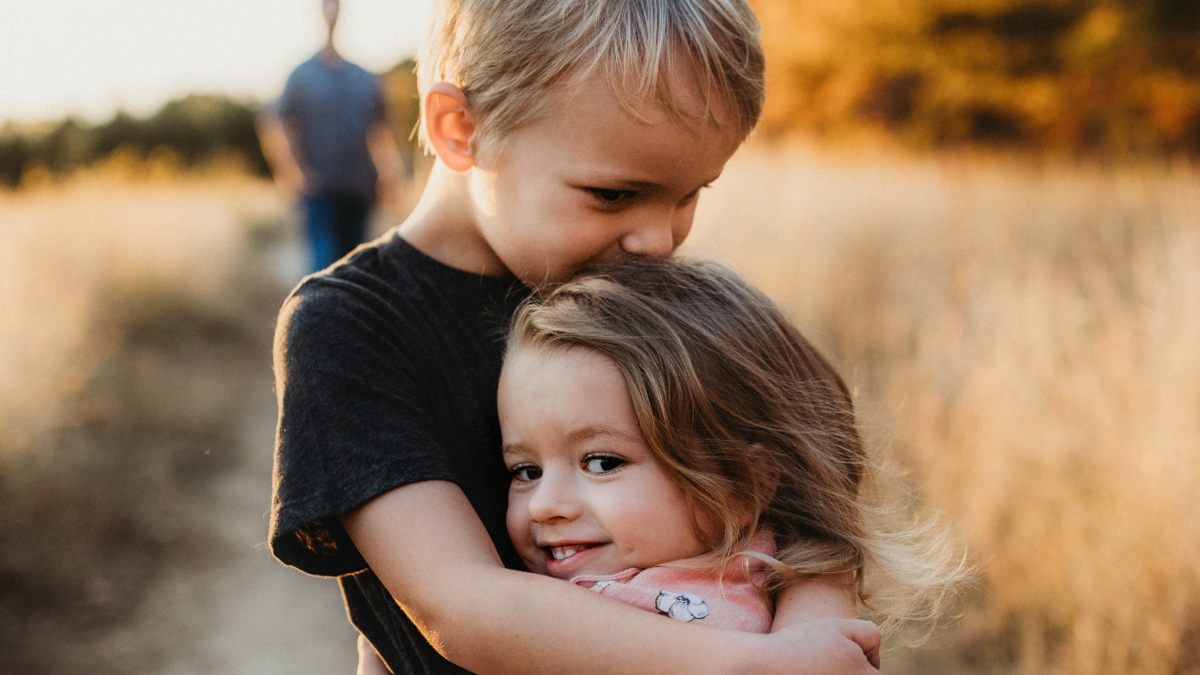
How An 'Inside Out' Inspired Game Is Taking Child Mental-Health Education By Storm
If your kids loved Inside Out, then they'll love 'InsideU' even more. Here's how the game was created, and why it's so beloved amongst kids.

By Mark Travers, Ph.D. | June 27, 2024
Every parent knows the struggle—one moment your child is a bundle of joy, the next, they're a whirlwind of emotions. While adults benefit from rich vocabularies and extensive life experiences to articulate and manage their feelings, children generally need more support understanding and expressing emotions.
This is precisely why movies like Inside Out (2015) and its recent 2024 sequel, Inside Out 2, have resonated so deeply among children and families. And it's why researchers were inspired by the film to create a game that makes social-emotional learning fun for children.
Disney and Pixar have woven a narrative that educates children about their emotions, cleverly disguised as pure entertainment. By anthropomorphizing emotions into lovable characters—Joy, Sadness, Anger, Fear, Disgust and Anxiety—children unconsciously learn to treat their feelings as friends, not as intangible, mysterious forces.
Around the same time Inside Out was released, Dr. Sam Hubley, a clinical psychologist and assistant research professor at the University of Colorado, more than a thousand miles from Pixar's Emeryville, California headquarters, was working toward a similar goal: helping children engage with their emotions in novel ways. Hubley, known for his seminars on the subject, was building a small community focused on providing public-facing health education for young people and families when he first watched the movie.
Impressed by Inside Out and how it dealt so innovatively with the emotions of a young girl going through change, he decided to screen it before one of his lectures on the topic of social-emotional learning. SEL is a field focused on teaching people of all ages, but especially children, skills to recognize and manage their emotions, establish and maintain positive relationships and make responsible decisions.
It was a resounding success; the venue he booked for the screening and lecture was nearly sold out for two consecutive days, a reception that was unprecedented for Hubley.
The fact that an animated movie for kids stirred the inner child in people so much that they warmed up to the importance of social-emotional learning caught his attention. What if there was a way to merge what he was trying to do with the engaging, yet abstract, medium of animation?
Hubley Takes His Ideas To Emeryville
Sam Hubley's grandparents were John and Faith Hubley, legendary pioneers of the American animation industry. While his last name might have opened doors, it was his unique vision for bringing social-emotional learning to life with characters from Inside Out that led to a collaborative project with Pixar Animation Studios.
Systemic social-emotional learning, while crucial, is notoriously challenging to achieve. Traditional educational systems often focus on academic achievements and cognitive skills, relegating social-emotional learning to secondary priority despite its proven positive impact on students' overall character strength and well-being.
Moreover, effective implementation of social-emotional learning must be culturally sensitive and adaptable to diverse student populations, something that existing systems may struggle to accommodate without significant reforms.
Hubley's take on these challenges was out of the box: Why not get kids excited about the nuances of their own emotions by leveraging their already-existing love for the characters of Inside Out? This way, they can actively seek out social-emotional learning instead of social-emotional learning being drilled into them by the system.
After all, research shows that giving children the liberty to choose can enhance their motivation to learn, particularly in the context of self-regulation interventions for young kids.
An Idea For An Online Game Is Born And A Partnership Emerges
Hubley began working with multiple stakeholders on an interactive learning game inspired by Inside Out. He took this idea to the Renée Crown Wellness Institute at the University of Colorado Boulder, where he worked. And it was a perfect match.
The Crown Institute is all about pioneering innovative, scientifically grounded ways to support the mental and emotional wellness of young people. Along with Pixar Animation Studios, the Institute joined hands with Australian design and digital solutions firm Liquid Interactive to create InsideU.
"The overarching objective," Liquid Interactive explains, "was for the tool to be perceived as fun, not educational. They didn't want kids to easily spot the peas hiding in the mash and gravy."
InsideU uses scenes from Pixar's Inside Out universe to engage children in an interactive, game-style environment that initiates conversations about their emotions. By interacting with scenarios that involve familiar characters like Joy, Sadness, Anger, Fear and Disgust, children are naturally drawn into learning and opening up about their own feelings.
With the scholarly expertise from the Crown Institute's team—led by Hubley, including clinical child psychologist Julia Zigarelli and cognitive psychology researcher Ryan Guild—and the animation prowess of Liquid Animation, which has over two decades of history working with Disney, the final product is artfully crafted. Most importantly, it's true to the latest science on how we must communicate with our children about their feelings, a key intention of Hubley's original seminars.
InsideU Is Under Constant Refinement—And Kids Play A Big Part
Over Summer '23, the Crown Institute team partnered with kids aged 6 to 12 from the Boys & Girls Clubs of Metro Denver to get children involved in the process of perfecting the game. The partnership led to multiple collaborative design sessions and insights that incorporated into InsideU to make it more meaningful and engaging. For example, many kids were more at home describing their emotions in abstract terms, using metaphor and art to represent the mind-body connection that comes with emotions.
This preference for abstract representations of emotions is what created Splat, an interactive and visual tool within the game that allows children to assign colors, shapes, sizes and sounds to their emotions. For example, an angry child might represent their emotion as a crimson splatter on the game, while a child experiencing joy might create a big, happy golden splatter.
The safety of the users is non-negotiable, so the integration of interactive AI into the mix, at least in its current state, is not on the map.
"I've seen some concerning examples of harm related to AI-generated health information," Hubley shares. "For now, we are keen to enhance InsideU with more interactive features that are first and foremost fun and engaging, and also help create more opportunities for young people to connect what they're learning with InsideU to what's happening in their lives."
A similar version of this article can also be found on Forbes.com, here.
